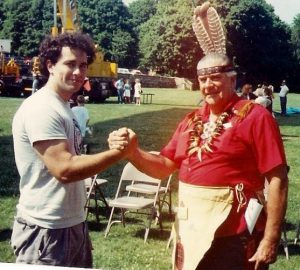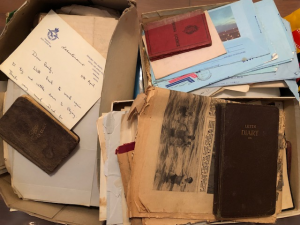[Editor’s note: This is the second part of a two-part series of interviews with David Allen Lambert; the first part may be read here. The present article originally appeared in the Society’s NEXUS newsletter, 4: 3.]
 Question: When did you first become interested in family history?
Question: When did you first become interested in family history?
Answer: Since the age of 12 I have belonged to the Stoughton Historical Society.
Q: That is a young age to begin. You were probably the youngest member.
A: I was. I started in 1981, and in 1984 they made me the assistant curator, when I was just 15. Continue reading A genealogist’s beginnings








